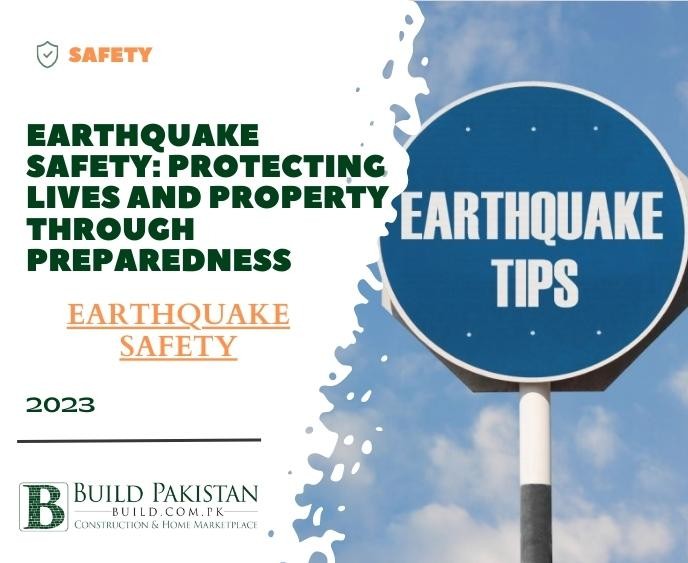Earthquake Safety: Protecting Lives and Property through Preparedness

Introduction:
Earthquakes are natural phenomena that can
strike without warning, causing significant damage to infrastructure and posing
a threat to human lives. In this blog post, we will explore essential
earthquake safety information to help individuals and communities better
understand the risks associated with earthquakes and take proactive measures to
protect themselves their loved ones, and their property. By raising awareness
and promoting preparedness, we can mitigate the impact of earthquakes and
enhance overall safety.
Understanding Earthquakes
An earthquake occurs when there is
a sudden release of energy in the Earth's crust, resulting in seismic waves
that can cause the ground to shake. These seismic events vary in magnitude and
can lead to a range of consequences, from mild shaking to destructive tremors.
It is crucial to understand the following key aspects of earthquakes:
Magnitude:
Earthquakes are measured on the Richter scale,
which quantifies the energy released during an earthquake. The higher the
magnitude, the stronger the shaking and potential damage.
Epicenter and Focus:
The epicenter is the point on the
Earth's surface directly above the earthquakes focus, which is the actual
location within the Earth where the seismic energy originates.
Aftershocks:
Aftershocks are smaller earthquakes that follow
the main earthquake. These can occur for days, weeks, or even months after the
initial event, causing additional damage and further disrupting recovery
efforts.
Earthquake Safety Measures
To minimize the risks associated
with earthquakes, it is crucial to adopt proactive safety measures and be
prepared. Here are some essential earthquake safety measures to consider:
Create an Emergency Plan:
Develop a family or household
emergency plan that includes communication strategies meeting points, and
instructions for different scenarios. Educate all family members on the plan
and conduct regular drills to practice emergency procedures.
Secure Heavy Objects:
Identify and secure heavy furniture,
appliances, and objects that could potentially tip over or cause injury during
an earthquake. Use straps, anchors, or adhesives to secure these items to walls
or stable surfaces.
Reinforce Structures:
Consult with professionals to assess
the structural integrity of your home or building Consider reinforcing
vulnerable areas, such as foundations, walls, and roofs, to withstand seismic
forces.
Create a Disaster Supply Kit:
Prepare a well-stocked disaster
supply kit that includes essential items such as non-perishable food, water,
medications, flashlights, batteries, a first aid kit, and important documents.
Ensure the kit is easily accessible and regularly updated.
Identify Safe Spaces:
Identify safe spaces within your home
or building where you can take cover during an earthquake. These areas should
be away from windows, heavy furniture, or objects that may pose a risk of
falling.
Educate Yourself:
Stay informed about earthquake safety guidelines, local evacuation routes, and emergency contact information. Understand the procedures for shutting off utilities, such as gas, water, and electricity, if necessary.
During an Earthquake
When an earthquake occurs, it is
essential to remain calm and follow these safety guidelines:
Drop, Cover, and Hold On:
Drop to the ground, take cover
under a sturdy piece of furniture, and hold on until the shaking stops. Protect
your head and neck during the process.
Stay Indoors:
If you are inside a building, stay indoors
until the shaking stops and it is safe to exit. Avoid using elevators during an
earthquake.
Evacuate If Necessary:
If you are in a high-rise building or
near the coast, follow evacuation instructions provided by local authorities.
Move to higher ground in case of a tsunami warning.
Be Prepared for Aftershocks:
After the initial earthquake be
prepared for aftershocks. These can be strong and cause additional damage.
Follow the same safety measures of dropping, covering, and holding on.
Conclusion:
Earthquakes are a natural occurrence that
requires proactive preparedness and awareness. By understanding the risks,
adopting safety measures, and being prepared, individuals and communities can
reduce the impact of earthquakes on lives and property. Remember to create an
emergency plan, secure heavy objects, reinforce structures, and educate
yourself about earthquake safety. During an earthquak remain calm, drop,
cover, and hold on. By working together and promoting earthquake safety, we can
enhance our resilience and protect ourselves and our communities in the face of
this powerful natural phenomenon.









